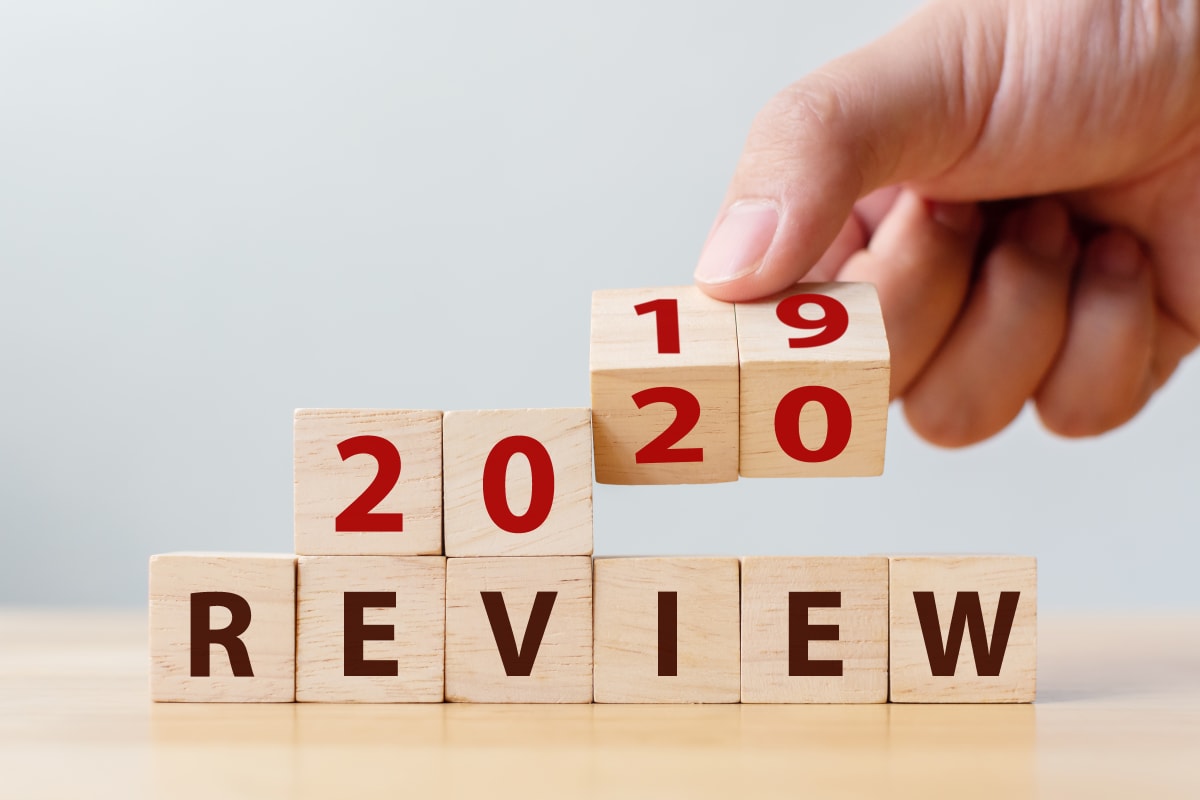Despite lingering concerns from the vacillating U.S.- China trade negotiations, all major asset classes and geographies posted strong returns in 2019. The S&P 500 Index produced a total return for 2019 of 31.5%, the Nasdaq Composite returned 36.7% and the Dow Jones Industrial Average returned 25.3%. Even the much-maligned international markets, with negative returns in three of the five preceding years, enjoyed solid returns for the year with the MSCI All Country World Index ex-U.S. up 21.5%, its second-best annual return since the 2008 financial crisis. The broad bond market had its best returns in 17 years as interest rates fell when the Federal Reserve shifted back to an accommodative stance. Commodity prices, historically a good barometer for expected economic activity, also advanced this past year, with the Goldman Sachs Commodity Index (GSCI) up 17.6%.
Investors might question how markets could generate such strong returns when there appears to be so much to worry about across the globe. There were plenty of potential stumbling blocks for the financial markets in 2019, whether it be the ongoing trade negotiations with China, the much-anticipated withdrawal of Britain from the European Union (known as Brexit), or rising tensions in the Middle East. Domestically, we ponder the implications of our widening federal budget deficit and the corresponding growth in our national debt, now just over $23 trillion. We also face the prospect of slower economic growth in the year ahead amid a slowdown in business investment.
The 2019 market returns in the face of clear visible risks is a reminder to all that markets are forward discounting mechanisms and investors, for now, don’t expect these issues to have material negative impacts on global economies. While the trade negotiations are complex, and are unlikely to be fully resolved anytime soon, investors are cheered by the news of a Phase 1 trade deal which is expected to be signed shortly. Brexit has certainly dragged out, but Boris Johnson and the Conservative Party’s majority win in the recent U.K. election has paved the way for an eventual exit. At this point, it appears investors are of the opinion Brexit will be like Y2K - much ado about nothing.In the U.S., unemployment levels are at 50-year lows, wages are finally growing on a real basis, and consumer leverage is lower than it was leading up to the financial crisis, of which all point to a healthy consumer. This serves as the anchor for our 2020 outlook for slow but continued economic expansions as consumption comprises nearly 70% of our gross domestic product.
As 2020 dawns, we close the chapter on an incredible decade for U.S. financial markets. Following 2008’s 37% decline in the S&P 500, markets bottomed on March 9, 2009 and have since compounded at an annualized rate of 18%. U.S. unemployment, which peaked during the Great Recession at 10% now stands at 3.5%, and wage growth is finally rising. Bonds also produced positive returns, with the 10-year treasury yield falling from 2.9% to 1.9% from March 2009 to December 2019.
Much like 2019, there was no shortage of concerns for investors to navigate throughout the decade. Some of the more notable examples include the U.S. debt downgrade in 2010, the Euro crisis of 2011, the China slowdown/commodity collapse of 2015 and the Fed/liquidity scare in the fourth quarter of 2018. The market reacted to several of these events and others along the way but sidestepped an “official” bear market of a 20% decline. We have accommodative Central Banks across the world to thank as they smoothed the way by keeping interest rates low and injecting liquidity into the system to ensure stability in financial markets.
What is an investor to do when faced with such uncertainty? Our consistent advice is to not try to time the market. While nerve-racking at times, we believe risk is best managed by a focus on the long-term and proper asset allocation which balances an investor’s investment objectives with their risk tolerance and liquidity needs. At Becker, we also focus on prudent security selection. While we offer clients various investment solutions across many asset classes and security types, our focus remains on bottom-up, fundamental security analysis. Whether it be individual stocks and bonds, or broad-based mutual funds or exchange traded funds designed to capture exposure to various markets, the process is grounded in the same fundamental discipline. It has always been our philosophy that it is more important to know what you are investing in, and why you’ve invested in it, than to invest in something in reaction to short-term market trends or flavors.
I close this blog with a salute to the incredible investment team and staff of Becker Capital. We are in the investment profession, but we are also in the relationship business. Your team at Becker Capital comes to work with a singular focus in serving our clients. It is my honor to be their CIO and I come to work every day knowing our clients are in their capable hands.
